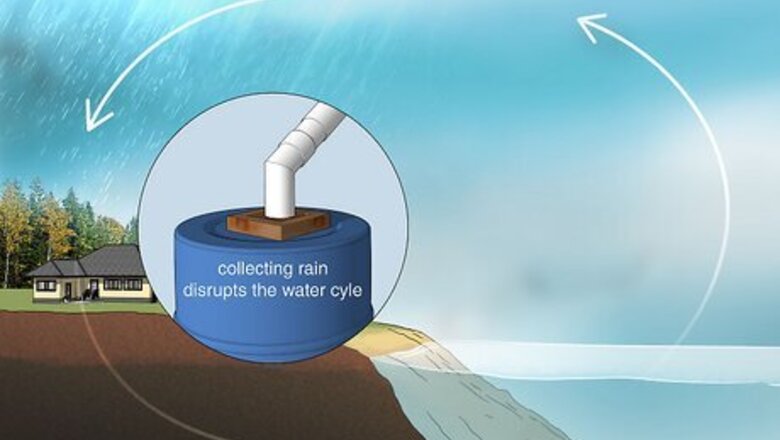
views
Reasons Collecting Rainwater is Sometimes Illegal
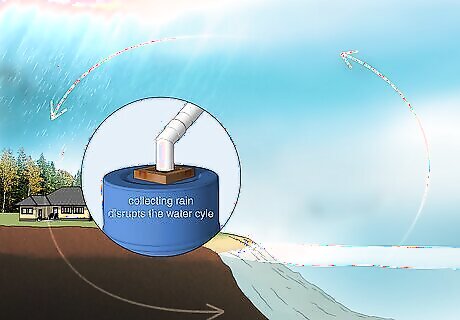
It can disrupt the natural water cycle. Water falls as rain, collects in the ground, then evaporates back into the atmosphere in a system known as the water cycle. But if many people are all collecting rainwater for their own use, experts worry that the water cycle may be disrupted or shift, causing dramatic changes in the local ecology and environment. That said, studies suggest that the amount of water collected by individual homes is often negligible, which is why many states simply have restrictions, rather than all-out bans.
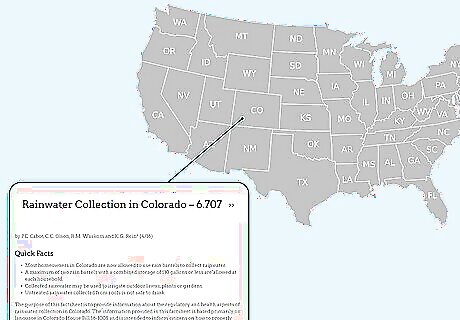
It can violate regional water rights. Some states, like Colorado, have a system of water rights that gives water usage priority to certain regions, individuals, businesses, or other entities. Since these are often arid regions without much natural water, collecting rainwater can disrupt the system of rainfall and snowmelt, depriving those higher in priority of the water granted to them by law. Water rights often operate on a “first in time, first in right,” basis, meaning that whoever “uses” the water first often has priority thereafter. Many of these laws were established during the settlement of the West, and whether or not they’re fair or necessary is a topic of debate.
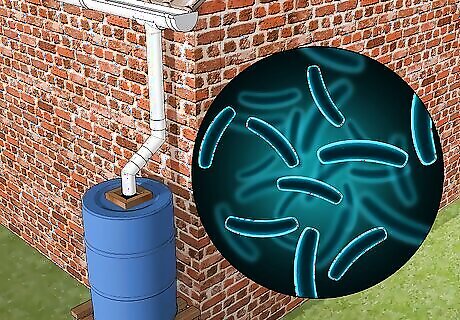
Collected rainwater may be unsafe for use. Rainwater collected in a barrel, or through other traditional means, is untreated, and can host a vast array of contaminants, harmful bacteria, and other substances that make it unsafe for consumption without properly filtering it. Many states restrict rainwater collection as a public safety measure. Of course, many use rainwater for things like irrigation or flushing sewage; it’s not all for consumption!
Which states have rainwater collection restrictions?
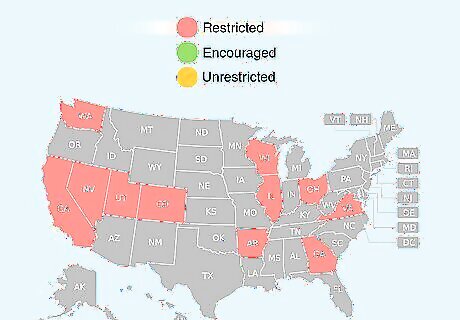
Collecting rainwater is restricted in 11 states. The reasons for these restrictions vary, but they usually have to do with environmental, health, and water rights concerns. Most of these states do allow rainwater collection in certain amounts and for certain purposes, so check the official Rainwater Harvesting Map to find your state and learn more about its restrictions. States where collecting rainwater is restricted include: Arkansas, California, Colorado, Georgia, Illinois, Nevada, Ohio, Utah, Virginia, Washington, and Wisconsin.
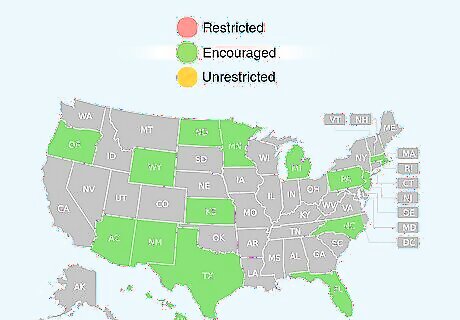
Rainwater collection is encouraged in 16 states. These are usually places where rainfall is abundant, and having private households collect rainwater for their own use eases the pressure on water infrastructure. Incentives vary by state, but some offer tax rebates, or even cash incentives. Check the official FEMP Rainwater Harvesting Map for more information on your state’s policies. These states are: Arizona, Florida, Hawaii, Kansas, Maryland, Michigan, Minnesota, New Jersey, New Mexico, North Carolina, North Dakota, Oregon, Pennsylvania, Rhode Island, Texas, and Wyoming. Though there may be incentives, some of these states, like New Mexico, still have guidelines and restrictions on how you can collect rainwater. Many only permit collecting water that flows off your rooftop.
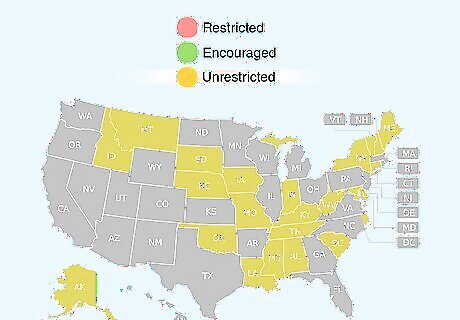
Rainwater collection is unrestricted in 23 states. These states don’t discourage collecting rainwater, nor do they offer incentives like the states described above. Residents in these states are permitted to collect and use rainwater as they see fit. These states include: Alabama, Alaska, Connecticut, Delaware, Idaho, Indiana, Iowa, Kentucky, Louisiana, Maine, Massachusetts, Mississippi, Missouri, Montana, Nebraska, New Hampshire, New York, Oklahoma, South Carolina, South Dakota, Tennessee, Vermont, and West Virginia.
Collecting Rainwater
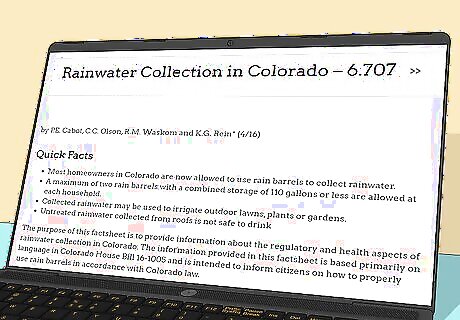
Check your local laws and regulations. State and local laws are always changing, especially in this age of a rapidly shifting climate. Even if you’re fairly sure about your local laws, take a minute to check the official FEMP Rainwater Harvesting Map to ensure it’s legal to collect rainwater in your area, or learn about restrictions specific to your region.
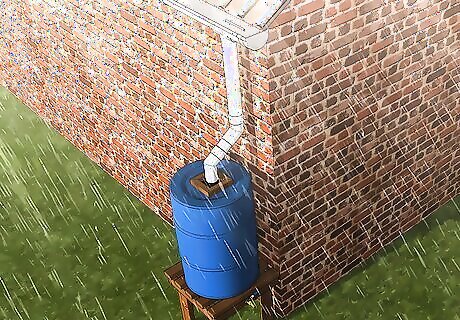
Place a barrel under a drainage spout to collect non-potable water. Collecting rainwater for purposes other than drinking is a cinch. Simply acquire a large barrel, preferably with a lid made for rainwater collection, and place it under the drainage spout of your home’s gutter, on a level and sturdy surface. Use non-potable rainwater to wash your car, water your garden or lawn, clean your tools or outdoor gear, or any other purpose aside from drinking it or applying it to your skin. Many states or counties that encourage rainwater collection sell their own rainwater barrels. Consult your county agricultural office for similar opportunities.
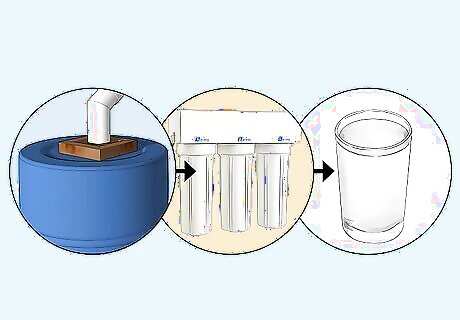
Filter and purify collected rainwater for drinking. Drinking rainwater is rarely recommended, but can be done by first filtering it to remove any contaminants. First, run the water through an activated carbon filter to remove particles, boil it for at least a minute to kill germs, then test it with a home water kit to ensure it’s drinkable. Or, you may neutralize bacteria with 6–8 drops of unscented and uncolored chlorine bleach for every 1 gallon (3.8 L) of rainwater.











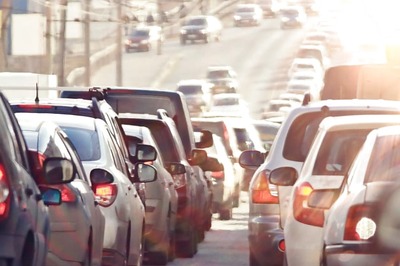

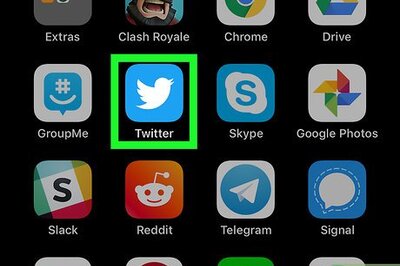






Comments
0 comment